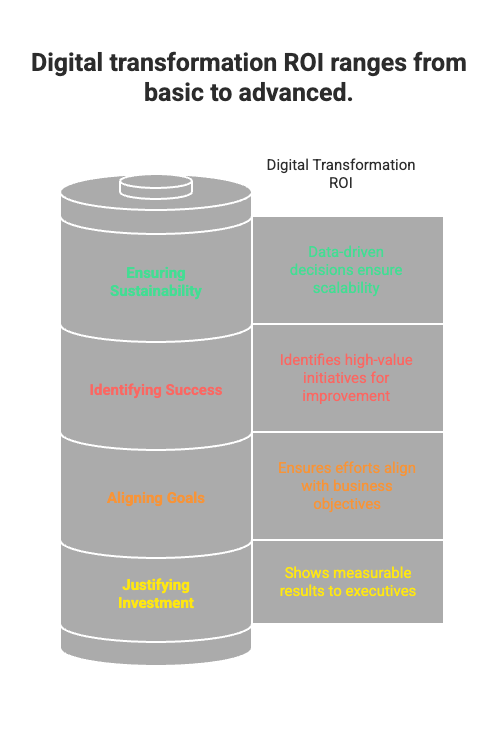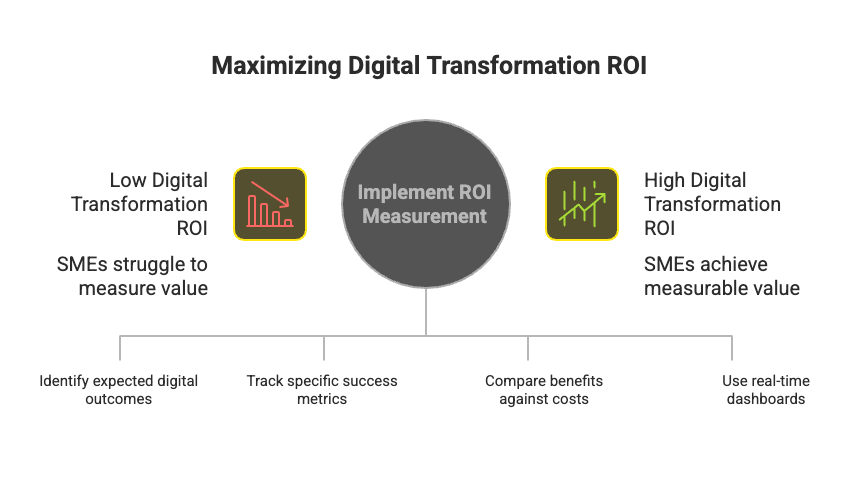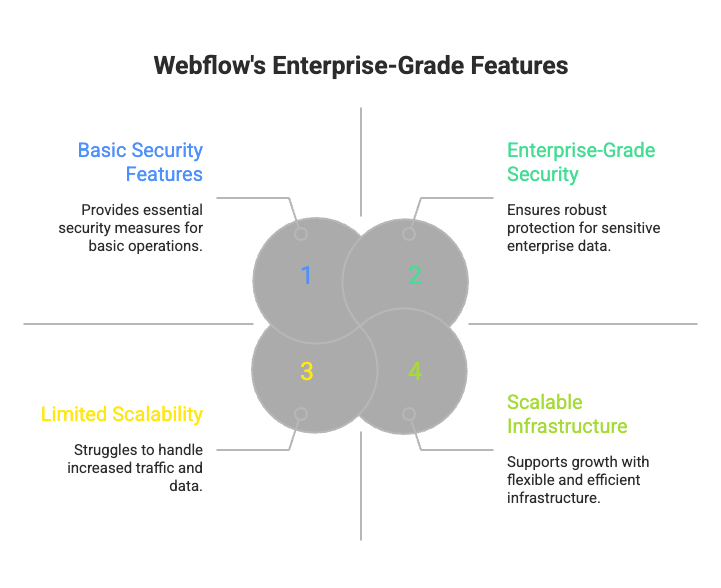Maximizing Your Digital Transformation ROI: A Hong Kong SME's Blueprint for Success
In today’s technology-driven world, digital transformation is no longer a luxury—it’s a necessity for businesses to stay competitive. For small and medium-sized enterprises (SMEs) in Hong Kong, digital transformation presents an opportunity to streamline operations, enhance customer experiences, and unlock new revenue streams. However, as with any investment, it’s critical to understand the return on investment (ROI) to ensure the resources spent on transformation initiatives deliver tangible value.
Measuring the ROI of digital transformation can be challenging, especially for SMEs with limited resources. Without clear metrics or a structured approach, businesses risk overspending on technology or failing to achieve their desired outcomes. At RMD HK, we’ve helped numerous Hong Kong SMEs design, implement, and measure their digital transformation efforts, ensuring measurable success and future-proofing their operations.
In this blog, we’ll explore how Hong Kong SMEs can effectively calculate and maximize digital transformation ROI, focusing on actionable KPIs, real-world examples, and practical strategies for success.
Why ROI Matters in Digital Transformation
Digital transformation often involves significant investments in technology, training, and process changes. Understanding ROI is essential for several reasons:
1. Justifying Investment
Executives, stakeholders, and business owners need to see measurable results to justify the cost of digital transformation initiatives.
2. Aligning Goals with Outcomes
Measuring ROI ensures that transformation efforts align with key business objectives, such as increasing revenue, reducing costs, or improving customer satisfaction.
3. Identifying Success Metrics
ROI helps businesses identify which initiatives are delivering the most value and which areas require improvement.
4. Ensuring Long-Term Sustainability
With clear ROI metrics, SMEs can make data-driven decisions that ensure the sustainability and scalability of their digital transformation efforts.
Key KPIs for Measuring Digital Transformation ROI
To effectively measure ROI, SMEs need to establish key performance indicators (KPIs) that align with their business goals. Below are the most crucial KPIs for tracking the success of digital transformation projects:
1. Financial Metrics
a. Revenue Growth
Digital transformation often enables businesses to unlock new revenue streams by improving customer experiences, expanding into new markets, or launching digital products.
- Example KPI: Percentage increase in revenue within six months of implementing a digital strategy.
b. Cost Savings
Automation and process optimization can reduce operational costs, such as labor expenses or manual errors.
- Example KPI: Reduction in operational costs after implementing automation tools (e.g., 20% cost savings in the logistics department).
Real-World Example:
A Hong Kong-based logistics SME adopted a low-code platform to automate inventory management, reducing manual errors and saving HKD 500,000 annually.
2. Operational Efficiency
a. Process Automation
Measuring the percentage of workflows automated or the time saved through digital tools helps track efficiency improvements.
- Example KPI: Average reduction in processing time for key workflows (e.g., a 40% reduction in invoice processing time).
b. Employee Productivity
Digital tools and platforms can empower employees to perform tasks more efficiently.
- Example KPI: Increase in employee productivity, measured by output per hour or task completion rates.
Real-World Example:
A Hong Kong retail SME implemented a cloud-based ERP system to streamline its supply chain, reducing delays by 30% and enabling faster restocking of popular products.
3. Customer Experience Metrics
a. Customer Retention Rates
Digital transformation can improve customer satisfaction and loyalty by providing seamless, personalized experiences.
- Example KPI: Retention rates before and after launching a digital customer loyalty program.
b. Net Promoter Score (NPS)
This measures customer satisfaction and the likelihood of customers recommending your business to others.
- Example KPI: Increase in NPS after introducing personalized email campaigns or self-service portals.
Real-World Example:
A Hong Kong-based hospitality SME launched a mobile app for hotel bookings, increasing customer retention by 25% and boosting NPS by 15 points.
4. Market Reach and Scalability
a. New Customer Acquisition
Digital tools like targeted advertising, social media campaigns, and e-commerce platforms can help businesses reach new audiences.
- Example KPI: Number of new customers acquired through digital channels.
b. Market Expansion
Digital transformation can enable businesses to expand into new markets, whether locally or internationally.
- Example KPI: Revenue generated from new markets or channels post-digital transformation.
5. Digital Adoption Metrics
a. User Adoption Rates
Measuring how quickly employees or customers adopt new digital tools is critical to gauging the success of implementation efforts.
- Example KPI: Percentage of employees actively using the new CRM system within three months of deployment.
b. Training Effectiveness
Assessing the impact of employee training programs ensures that staff are equipped to leverage digital tools effectively.
- Example KPI: Employee proficiency scores before and after training sessions.
Real-World Case Study: Digital Transformation ROI in Action
Client: A Hong Kong SME in the Retail Sector
Challenge: The company struggled with manual inventory management, leading to frequent stockouts and dissatisfied customers.
Solution: Collaborated with RMD HK to implement a low-code inventory management platform integrated with their POS system.
Outcomes:
- 30% improvement in stock availability, reducing lost sales opportunities.
- 20% reduction in labor costs through automated inventory tracking.
- Increased customer satisfaction scores, leading to a 15% boost in repeat purchases within six months.
This example highlights how SMEs can achieve measurable ROI by identifying pain points, implementing the right digital tools, and tracking success metrics.
Steps to Maximize Digital Transformation ROI for Hong Kong SMEs
1. Define Clear Objectives
Start by identifying what you want to achieve with digital transformation. Objectives could include increasing revenue, reducing costs, or improving customer satisfaction.
2. Choose the Right Tools and Platforms
Select digital tools and platforms that align with your business goals and budget. For Hong Kong SMEs, low-code solutions like Microsoft Power Apps or Mendix can be cost-effective and scalable options.
3. Focus on Employee and Customer Training
Ensure that employees and customers understand how to use new digital tools effectively. Offer training sessions, tutorials, and ongoing support to improve adoption rates.
4. Monitor and Measure KPIs
Establish KPIs from the outset and track them regularly to measure progress. Use dashboards and analytics tools to gain real-time insights into performance.
5. Partner with Experts
Collaborating with a digital transformation agency like RMD HK can help you design and implement strategies that maximize ROI. Our expertise ensures your transformation efforts are both impactful and sustainable.
FAQs: Measuring Digital Transformation ROI
1. How can Hong Kong SMEs measure digital transformation ROI?
SMEs can measure ROI by tracking KPIs such as revenue growth, cost savings, customer retention rates, and operational efficiency improvements.
2. Which digital tools are best for measuring ROI?
Tools like Google Analytics, CRM platforms, and ERP systems provide valuable data for tracking ROI. Many low-code platforms also offer built-in reporting features.
3. How long does it take to see ROI from digital transformation?
The timeline varies depending on the scope of the project. Many SMEs start seeing measurable results within 3 to 6 months of implementation.
Why Choose RMD HK for Your Digital Transformation Journey
At RMD HK, we specialize in helping Hong Kong SMEs navigate the complexities of digital transformation. From strategy development to implementation and measurement, our team ensures your transformation efforts deliver measurable ROI and long-term success.
What We Offer:
- KPI-Driven Strategies: Tailored plans designed to align with your business objectives.
- Low-Code Expertise: Cost-effective solutions that accelerate implementation timelines.
- Hong Kong Focus: Deep understanding of the local business landscape and market dynamics.
Final Thoughts
For Hong Kong SMEs, digital transformation represents a powerful opportunity to enhance customer experiences, improve efficiency, and drive growth. However, to ensure these efforts deliver value, businesses must focus on measuring and maximizing ROI. By defining clear objectives, tracking key metrics, and leveraging the right tools, SMEs can achieve sustainable success in a competitive market.




